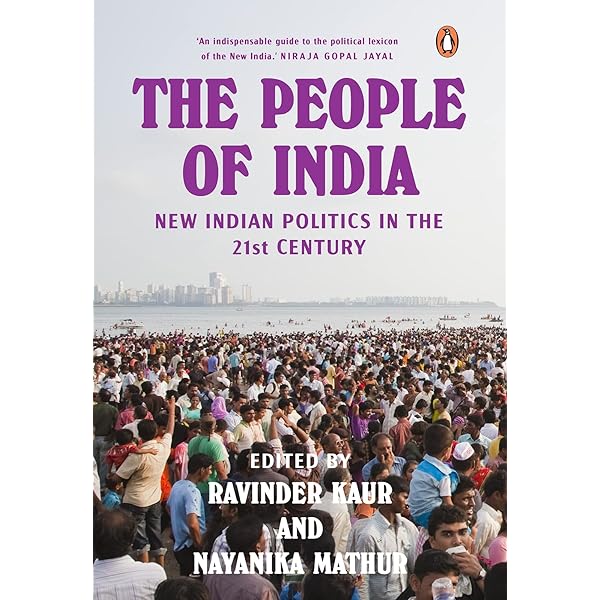
The People of India: New Indian Politics in the 21st Century edited by Ravinder Kaur and Nayanika Mathur (published by Penguin Books in 2022) explores the complexity of the political landscape of India through the diverse political figures that have come to occupy the interstices of the political spaces beyond the democratically elected structures of the state. The contributing authors to this volume call attention to the ‘People of India’ as varied ‘figures’ that are identified within the multiplicity of the narratives that emerge within the political structure. Often these figures go beyond the binary of the state and the people and beyond the constructions of being names and numbers in the voter rolls. These ‘figures’ are identified as contextual and historical figures who have contributed to shaping the political discourse of India. The figures invoked by the authors range from a distinct milieu of people that operate within the political structure but have also gone to cause a rupture and create dissonances in the political structure.
In the introduction to the book, the editors draw attention to the figure of the Kisan who had remained obscured in the popular imagination of the nation but had come to occupy the centre stage in the years 2020-21. This sets the precedent for the rest of the chapters in the volume, where the authors expand on the ‘typology of a range of political actors’ (pp. 277) where the political roles that they play assume more importance than the individuals embodying the role. For instance, the women protestors of Shaheen Bagh are contextualised by Lawrence Cohen into the figure of the ‘old woman’ who holds a distinct identifier as representing the ‘janata’ or public who requires the seva of the leader in the political history of India. From Cohen’s identification of the old woman to Navyug Gill’s articulation of the role of the Kisan, these figures have been evoked to draw attention to the major episodes of friction in the political timeline of new India. On a similar plane, Blom Hansen’s ‘political activist’ emerges as the disruptor in the system managed by the political elites or Ravinder Kaur’s Bhakt materializes as a figure hiding behind fake Twitter profiles but as a political unit nonetheless. What ties all of these figures together in a common narrative is how they have been able to activate the collective sentiments of the public across mediums ranging from the materiality of the ‘’street to the virtual world of the internet.
An initial glance at the content of the volume might assume that some of the ‘figures’ discussed are ‘ahistorical’ but the authors can successfully place them in a historical and ethnographically sourced understanding of the ‘people’ that make up the New India or Naya Bharat. The editors are conscious of the use of the prefix “new” and establish that the newness of the Indian polity comes from its transitory nature. What sets this volume apart from the other commentaries on Indian politics is that it possibly generates an innovative analytical and methodological framework to explore the political narrative of India. This volume is able to do that by bringing forward the various people who make the Indian polity and not the abstract entities like the state alone. To talk about the people of India separately from the state’s definition of them redefines the agency of the people in question and brings back the focus to the tangible roles that they play. This makes for an interesting channel to identify the diversity of the political actors that emerge in South Asia and focus on their contribution to shaping and reshaping the political discourse in India.
While the book does a magnificent job at bringing the vast array of political actors into focus, it does eventually make one wonder whether invoking categories such as ‘Rashtrapita’, ‘Kisan’, Bhakt, in fact, throw one into the trap of Indian exceptionalism. For instance, would talking about ‘Sarkar’ be any different than talking about an elected government in any other context? But as the book identifies, ‘Sarkar’ indeed holds a distinct meaning in the context of India. Would these categories then eventually end up being used as keywords or buzzwords that would entrap one to not think about these figures beyond the category into which they have been fixed? However, as the editors themselves suggest they have attempted to open up a conversation about who are the ‘the people’ of India today and how did they come to be. This in itself makes for an imperative exercise to understand the ever-shifting and mutating political landscape of India.
***
Dhriti Sonowal is a PhD Research Scholar at the Centre for the Study of Social Systems (CSSS), Jawaharlal Nehru University (JNU), New Delhi.
great
ad